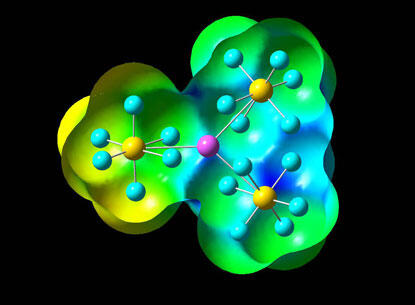
June 14, 2012
A New World of Chemistry
Enhancing the chemistry of zinc
Share this story
By tinkering with a zinc molecule, Virginia Commonwealth University researchers have discovered it can exist in a higher oxidation state, opening the door for a new form of chemistry and new composition of matter.
The oxidation state of an element is key to understanding processes in chemistry and biology including redox reactions, catalysis and reaction mechanisms. For decades, chemists have been fascinated with the possibility that the group 12 elements of the periodic table, which includes zinc, cadmium and mercury, could exist at a higher oxidation state. Previously, scientists had found mercury to exist in the +IV oxidation state, but have never shown that zinc, being much lighter in weight compared to mercury, could exist beyond the +II oxidation state.
A new series of theoretical work by Puru Jena, Ph.D., distinguished professor of physics at VCU, and his graduate student Devleena Samanta, shows that ‘higher and unusual oxidation states of metals can be achieved using ligands with large electron affinities such as superhalogens.’
In the study, Jena and Samanta demonstrated that by using specific ligands that satisfy two important criteria – high electron affinity and no tendency to coalesce – unusually high oxidation states of elements can be stabilized. The discovery was published online last month in the Journal of the American Chemical Society.
“Our new findings open the door for a new kind of chemical reaction, and therefore new chemistry,” said Jena.
“We believe that our work provides a new perspective on how to manipulate oxidation states and therefore one can imagine tremendous applications of this in all sphere of chemistry and material science,” said Samanta.
The work was supported in part by the Department of Energy, grant number: DE-FG0296ER45579.
Subscribe to VCU News
Subscribe to VCU News at newsletter.vcu.edu and receive a selection of stories, videos, photos, news clips and event listings in your inbox.










